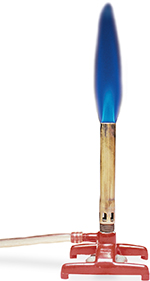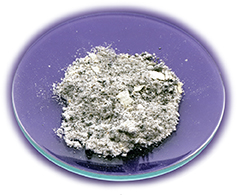Figure 14 A Bunsen burner generates heat and light by the combustion of natural gas.
Interpreting Photos What reactants or products are visible in the reaction shown above?

Figure 15 Calcium oxide, or lime, is produced when calcium burns in the presence of oxygen. In this reaction, the calcium is oxidized and the oxygen is reduced.

Combustion
A combustion reaction is one in which a substance reacts rapidly with oxygen, often producing heat and light. The burning of natural gas, shown in Figure 14, is an example of combustion. The main component of natural gas is methane, CH4. When methane burns in an unlimited supply of oxygen, the following reaction occurs.
The products of the reaction are carbon dioxide and water. The combustion of methane also generates both heat and light.
By now you know the chemical equation for the combustion of hydrogen.
Notice that you could also classify this reaction as the synthesis of water. The classifications for chemical reactions sometimes overlap.
Reactions as Electron Transfers
So far, you have learned that chemical reactions can be identified by the type of reactant or by the number of reactants and products. For example, in a combustion reaction one of the reactants must be oxygen. In a synthesis reaction, two or more reactants combine to form a single product.
As scientists learned more about the structure of the atom, they found different ways to describe how reactions take place.  The discovery of subatomic particles enabled scientists to classify certain chemical reactions as transfers of electrons between atoms. A reaction in which electrons are transferred from one reactant to another is called an oxidation-reduction reaction, or redox reaction.
The discovery of subatomic particles enabled scientists to classify certain chemical reactions as transfers of electrons between atoms. A reaction in which electrons are transferred from one reactant to another is called an oxidation-reduction reaction, or redox reaction.
Oxidation For a long time, people have known that metals react with oxygen. Calcium, for instance, reacts with oxygen and forms calcium oxide (CaO), shown in Figure 15. Iron reacts with oxygen and forms rust, or iron(III) oxide (Fe2O3). These types of synthesis reactions, in which a metal combines with oxygen, traditionally have been classified as oxidations.
When calcium reacts with oxygen, the following reaction takes place.
Notice that while the atoms of both reactants (Ca and O2) are neutral, the product of the reaction is a compound composed of ions (Ca2+ and O2-). When calcium reacts with oxygen, each neutral calcium atom loses two electrons and becomes a calcium ion with a charge of 2+.




